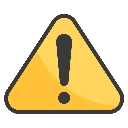

A nurse in an urgent care clinic is assessing an adolescent who has an upper respiratory tract infection. Which of the following findings should the nurse identify as a manifestation of pertussis?
Dry, hacking cough
Rationale: The nurse should identify that a dry, hacking cough is a manifestation of pertussis. This disease usually begins with indications of an upper respiratory tract infection, which includes a dry, hacking cough that is sometimes more severe at night.
A nurse is caring for a school-age child who is receiving a blood transfusion. Which of the following manifestations should alert the nurse to a possible hemolytic transfusion reaction?
Flank pain
Rationale: The nurse should recognize that flank pain is caused by the breakdown of RBCs and is an indication of a hemolytic reaction to the blood transfusion.
A nurse is caring for a school-age child who is receiving cefazolin via intermittent IV bolus. The child suddenly develops diffuse flushing of the skin and angioedema. After discontinuing the medication infusion, which of the following medications should the nurse administer first?
Epinephrine
Rationale: This child is most likely experiencing an anaphylactic reaction to the cefazolin. According to evidence-based practice, the nurse should first administer epinephrine to treat the anaphylaxis.
Epinephrine is a beta adrenergic agonist that stimulates the heart, causes vasoconstriction of blood vessels in the skin and mucous membranes, and triggers bronchodilation in the lungs.
A nurse is teaching the guardian of a 6-month-old infant about car seat use. Which of the following statements by the guardian indicates an understanding of the teaching?
"I should secure the car seat using lower anchors and tethers instead of the seat belt."
Rationale: Lower anchors and tethers, or the LATCH child safety seat system, should be used to secure an infant's car seat in the vehicle. This system provides anchors between the front cushion and the back rest for the car seat. Therefore, if this system is available, the seat belt does not have to be used.
A nurse is planning care for a toddler who has a serum lead level of 4 mcg/dL. Which of the following actions should the nurse plan to take?
Schedule the toddler for a yearly rescreening.
Rationale: The nurse should schedule the toddler for a lead level rescreening in 1 year and educate the family on ways to prevent exposure.
A nurse is caring for a toddler who has spastic (pyramidal) cerebral palsy. Which of the following findings should the nurse expect? (Select all that apply.)
-Ankle clonus
jordancarter 7 months ago
This study guide is clear, well-organized, and covers all the essential topics. The explanations are concise, making complex concepts easier to understand. It could benefit from more practice questions, but overall, it's a great resource for efficient studying. Highly recommend!
| Category | ATI EXAM |
| Comments | 0 |
| Rating | |
| Sales | 0 |
Buy Our Plan

















